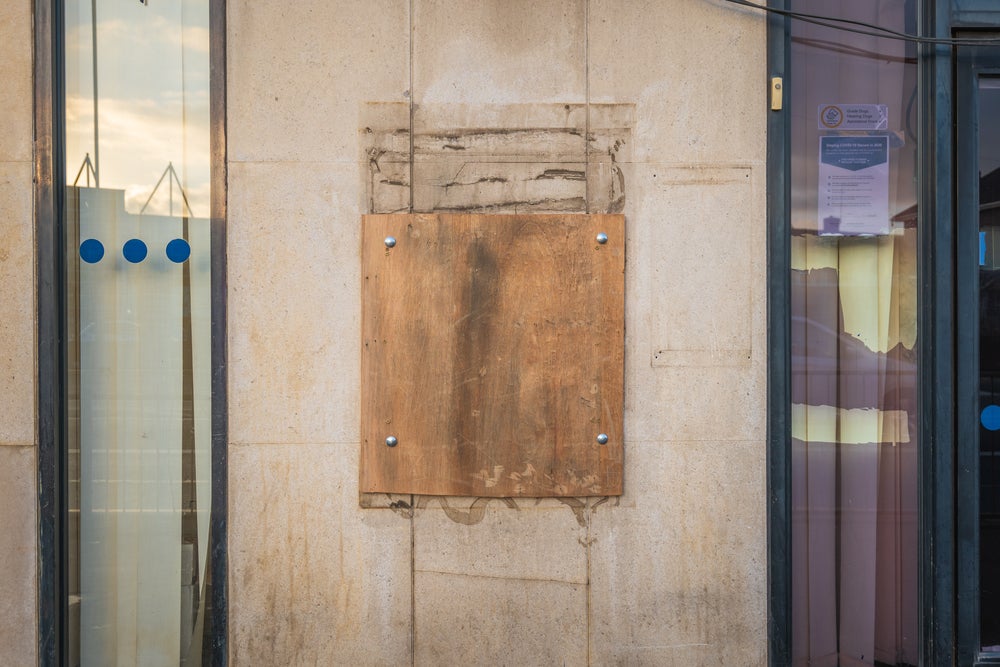The fourth webinar presented by Retail Banker
Interactive in association with Finacle from Infosys on 15
December, 2011, gave a complete overview of how innovation in
retail banking is emerging as an importance practice in the
worldwide economic climate. Benjami Puigdevall Esteve, managing
director at e-la Caixa, and Alison Estrada, director of knowledge
network at BAI discussed how innovation is key for
banks
 Chaired by the
Chaired by the
editor of Retail Banker International, Douglas Blakey, the two
speakers for the RBI and Finacle webinar on innovation in retail
banking were Benjami Puigdevall Esteve, managing director at e-la
Caixa, and Alison Estrada, director of knowledge network at Bank
Administration Institute (BAI).
In October 2011, Spanish bank la Caixa won the
Most Innovative Bank award at the Global Banking Innovation Awards
sponsored by BAI and Finacle.
Both Esteve and Estrada highlighted how
innovation is an important tool for banks and they particularly
spoke about innovation’s impact on la Caixa’s customers and the
lender’s reputation for leadership.
Blakey gave the webinar an informative start
by mentioning how banks around the world are using, or aiming to
use, innovation.
How well do you really know your competitors?
Access the most comprehensive Company Profiles on the market, powered by GlobalData. Save hours of research. Gain competitive edge.

Thank you!
Your download email will arrive shortly
Not ready to buy yet? Download a free sample
We are confident about the unique quality of our Company Profiles. However, we want you to make the most beneficial decision for your business, so we offer a free sample that you can download by submitting the below form
By GlobalData“A lot of banks claim to be innovative. If
banks are not talking how customer centric they are you can be rest
assured they are claiming to be leaders in innovations – some even
claim to be customer centric and innovative in the same sentence.
But how many such points are really valid?” questioned Blakey.
Blakey cited examples of lenders such as Metro
Bank, Bankinter, RBC that have used innovation in myriad aspects of
their businesses.
2011 has been a “very good year for branch
design” said Blakey, talking about the Virgin Money innovative
branch design as well as the new Czech lender Air Bank.
“But when you consider la Caixa’s channel
strategy – la Caixa genuinely is one of the few banks in the world
that has made innovation a part of its strategic priority,” said
Blakey.
BAI perspective
 The first speaker
The first speaker
of the webinar, Estrada, said that innovation is “certainly a
priority” for BAI.
“Our mission is to provide strategic
information for bankers so that they can innovate and stay relevant
in this evolving market place.”
Research conducted by BAI revealed that a
significantly larger number of respondents feel innovation is
important for banks now, compared to 2010.
The BAI research also found that companies
that continue innovating experience an increase in positive
consumer sentiment, and “they are seen as more trustworthy. They
seem to be understanding and listening better and investing in
their community”, said Estrada.
The Global Banking Innovation Awards received
over 200 nominations from over 40 countries, informed Estrada, and
the judging panel consisted of 10 international retail banking
executives. The award categories were Product Innovation, Service
Innovation, Disruptive Innovation and Most Innovative Bank.
“We looked at innovation, originality, and
impact on the business. We scored those. Six finalists were chosen
for each category. Deliberations were supplemented by additional
information”, said Estrada.
The Most Innovative Bank category “celebrates
really a banking institution that has a demonstrated culture of
innovation and an ongoing commitment. And I think la Caixa has
shown over and over – with consistency – innovation across all
channels services and products”, added Estrada.
Nominations for the 2012 Global Banking
Innovation Awards will open at the end of January, Estrada
informed.

la Caixa and innovation
The next speaker, Esteve, outlined how la
Caixa has used innovation in its multi-channel strategy. Being the
third largest financial group in Spain, la Caixa has more than 5m
clients and its ATM network is the largest in Spain, informed
Esteve.
“When we launched our multi-channel strategy,
it was a way to enhance the service we are offering to our clients.
The aim was to think about the advantage of the new technologies to
improve efficiency and basically increase commercial success for
all our branches and always keep the best quality and excellence in
service,” said Esteve.
For la Caixa, approximately 10 out of 100
transitions are conducted in branches and the rest is conducted via
e-channels, said Esteve. la Caixa’s internet bank is the main
electronic channel with 7m customers and 5m transactions every day.
It has a market share of 40% in Spain, informed Esteve.
Esteve stressed it is important for la Caixa
to ensure that all its channels have the same functionality through
the branch network as well as the internet service.
Esteve added that la Caixa is “quite strong”
in the mobile banking service and 30% of its internet clients are
at the same time mobile-banking users.
The ATM network of la Caixa offers over 200
different transaction options, and 71 out of 100 of the lender’s
transactions are conducted through la Caixa ATMs, said Esteve.
la Caixa has a “huge number of deposits”
through the ATM channel, added Esteve, with 25% market share for
envelope deposits, 39% for automated bank note deposits, and 67%
for automated cheque deposits.
“Innovation means competitiveness and
excellence,” and it is “relevant to build banking services”, Esteve
said.
There are three main drivers for successful
innovation, according to Esteve.
Firstly, it is important to promote innovation
as an attitude. “Innovation is not a model or a product – you
cannot scale attitude in general, you can scale time for
innovation,” said Esteve.
Secondly, though attitude is necessary,
knowledge is required and it needs to be combined with inspiration,
said Esteve. “It is true that inspiration is the first step to
innovation, but you should assume that only a small percentage of
all the good ideas you have will be real innovation,” he added.
Thirdly, it is important to be sure and put in
place all the necessary tools to gather ideas, and allow everyone
to participate in innovation.
“In our case our main drivers are our
employees, our clients, and what we call open innovation. Not only
la Caixa employees but all the talent we have in our organisation
is the most important asset we have as a company.
“For example, in our case, we make sure that
every month from our employees we have 1,000 suggestions, which is
huge number of ideas and knowledge but probably the most important
thing is to have tools to be able to acquire this knowledge.”
Esteve said now there is a “real new
generation of innovation and that is when you combine IT with
knowledge and what the customer needs”, and it is “kind of an
evolution than what we had a few years ago”
“We are asking our clients every day what we
can do better or what we can do from scratch,” said Esteve, adding
that through this technique la Caixa has received more than 10,000
new ideas.
The new approach is la Caixa’s way of “trying
to create a new sensation of ‘we want to build together’. It is not
just a question of asking clients ‘what do you think’, explained
Esteve.
“Now the problem is what to do with so many
ideas because we have not added enough to develop these ideas, but
it does not matter. The most important thing is to have the
processes to acquire this knowledge and develop a way – that we are
trying to do everything with our clients,” said Esteve.
Projects undertaken
Giving an example of open innovation, Esteve
said la Caixa “celebrated a kind of sing-ups party in November, for
24 hours day and night, asking people who are not clients of la
Caixa to go for our mobile apps for financial services and just
give la Caixa new ideas to develop financial apps. And we had in 24
hours 40 new proposals for different applications.
“One of these ideas spoke of apps being linked
with the evolution of the stock market with the volume of the music
of your phone. Obviously that could seem like just a funny app for
a small part of our clients but just think about what we could do
if we take the knowledge of this idea and try to apply this idea to
develop services for people with disabilities,” said Esteve.
Esteve further presented case studies of some
innovative projects such as la Caixa’s concept ATM that is
exclusive and has new features such as the security camera,
biometric and contactless facilities.
“After this exercise, what we have is the
world’s fastest cash withdrawal at la Caixa ATMs. That is a very
big example of what you can do if you want to be innovative,” said
Esteve.
Another example of innovation, according to
Esteve, is an app store built just for la Caixa mobile apps. “We
have more that 40 different apps available in our store and we have
– since we started with this project 18 months ago – 2m downloads,”
said Esteve.
“Mobile payments are again an excellent
example of what we can learn from our clients,” added Esteve,
talking about a pilot la Caixa undertook involving 1,500 la Caixa
customers across 500 branches making payments through their
mobiles.
“We learnt that with m-payment, the
transactions increased 30% and that means it is a huge increase of
volume in terms of financial activity when clients are paying with
the mobile instead of credit card. The excellent news is that
merchants are also ready to accept mobile payments.
“M-payments are important to help replace cash
so now we are investing a lot of efforts in investing and
developing new services around the concept of m-payments, and
related to m-payments,” said Esteve.
Esteve spoke about the new Linea Abierta – the
runner up in the Most Innovative Service category in the Global
Innovations Awards – which is an evolution from the transactional
side to a sales channel for la Caixa, where customers can find
products and services and where la Caixa sales persons operate
through home banking.
Discussing innovation over social networks,
Esteve spoke about la Caixa’s online community and business social
network, Caixa Empresa, for corporate customers to meet others and
find new business opportunities.
Looking ahead
Esteve said the future presents two main
challenges – how mobility will change and happen, and new
opportunities over digital networks, stressing that “digital
relationships will be as important as face to face
relationships”.
“Facebook, LinkedIn, and all the social
networks are just examples of the big change in the way we are
communicating with other people, and it is a social change.
“We need to find a way to translate this
social change in to something with value for our business products
and business model, and for sure digital networks are really
important in the way we think is necessary to create financial
services for the future,” said Esteve.
Two spot polls were conducted during the
webinar. A Q&A session followed that brought up several
listener queries for both the speakers.
A key question was, ‘What are the things that
are limiting innovations?’ to which Esteve answered that managing a
huge volume of knowledge and ideas – externally as well as
internally – was a main challenge.







